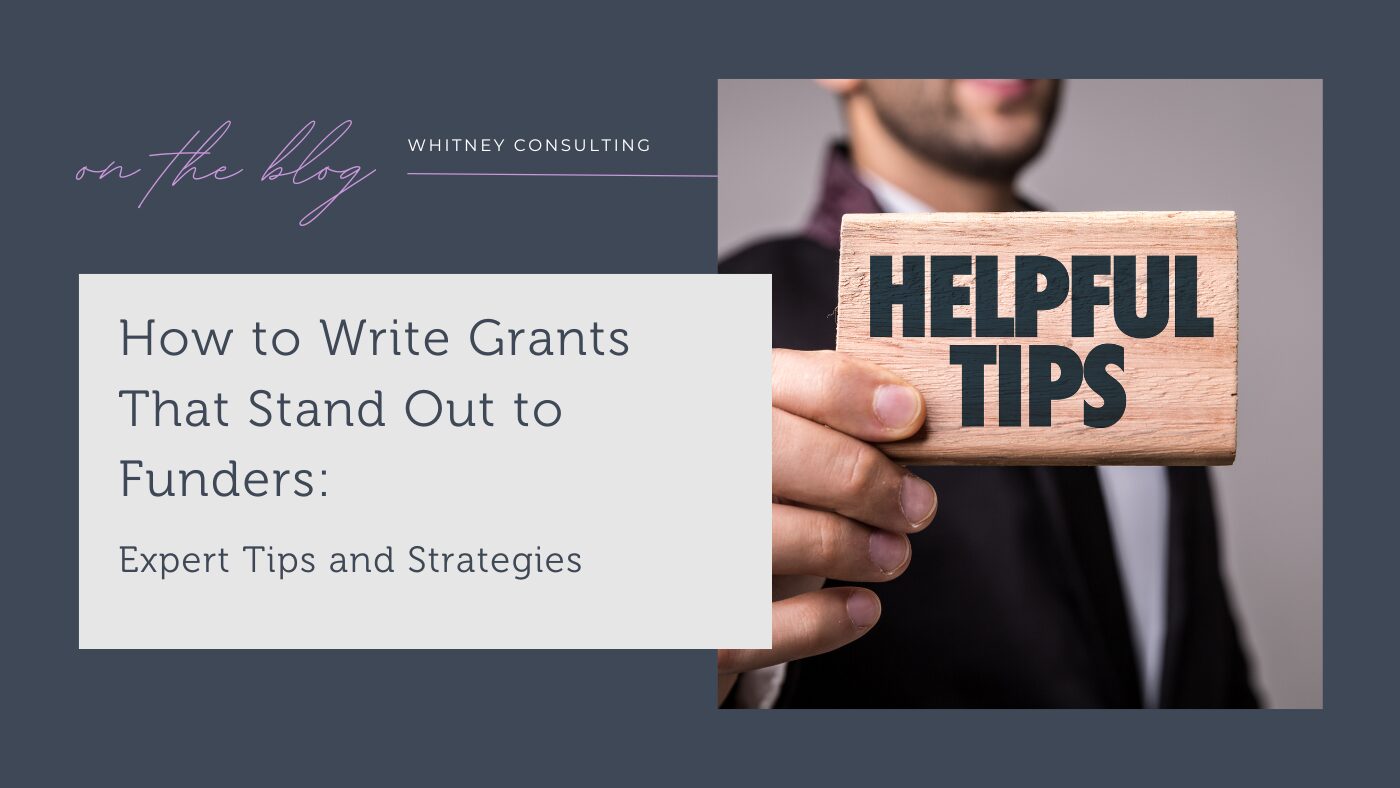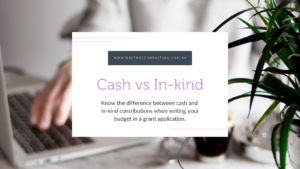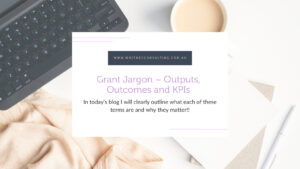Writing grants that captivate funders is an essential skill for anyone seeking funding opportunities, especially for nonprofits. Crafting a standout grant proposal involves a blend of preparation, clarity, and directness. Whitney Consulting recommends having an arsenal of project ideas ready to align with available grants. Your key to success is presenting a clear, compelling narrative that highlights your organisation’s goals and its ability to achieve them. This helps grab the reviewer’s attention and makes your proposal memorable.
Ensure your writing is concise and easy to read, employing definitive language like “will” instead of uncertain words such as “maybe.” Each paragraph in your grant proposal should centre on one main idea, supported by clear points that boost your case. This precision not only emphasises your understanding of the funding need but also showcases your ability to execute the project effectively.
Take the time to research thoroughly, focusing on eligibility criteria and application deadlines. Look for grants from government sources, foundations, and corporations that fit your project’s objectives. Demonstrating a strong alignment between your goals and the funder’s priorities can significantly increase your chances of success. With these strategies, your grant proposal will not just stand out but resonate with those making the funding decisions.
Understanding the Grant Writing Landscape
Navigating the grant writing landscape involves recognising different types of grants and understanding the needs and expectations of funding organisations. This knowledge helps craft strong proposals that capture the interest of grantors.
Types and Sources of Grants
Different grants serve various purposes. Government grants often support public services, research, and innovation. Private foundation grants frequently support specific causes like education, arts, or health. Meanwhile, corporate grants may focus on community impact and corporate social responsibility.
Understanding the source is key. Government bodies, private foundations, and corporations each have distinct criteria and goals. Align your project with the funder’s mission and area of interest to increase the chances of securing funding. Be sure to verify eligibility requirements and application procedures, as these can vary widely.
Funder’s Priorities and Requirements
Funders have specific priorities and requirements. They often seek projects that closely match their mission and strategic goals. Take time to research their past funded projects to understand what they value.
Pay attention to grantor’s guidelines, which might include project scope, budget limitations, and reporting expectations. Creating a checklist of these can be helpful. Clearly demonstrate how your project aligns with their priorities and address any requirements in your proposal. This approach not only shows compliance but also enhances your proposal’s credibility and appeal, increasing your chances of success.
Also Read:
How Grant Writing is Different from Writing as a Journalist
Grant Writing Myths Debunked
Preparation for Grant Writing
To succeed in securing funding, you need a comprehensive strategy. Establishing a solid foundation includes defining your nonprofit’s profile, crafting a compelling value proposition, and building trust and networks.
Building a Robust Nonprofit Profile
Start by identifying and communicating your organisation’s mission and goals. Your profile should reflect a clear image of what your nonprofit stands for. This includes basic details like your nonprofit’s name, location, year of establishment, and scope of activities.
Develop your mission statement and ensure it aligns with your chosen programs. It’s essential for you to communicate how your work impacts the community.
Maintain a record of past successes and current projects. This demonstrates credibility and helps funders see the value in supporting your cause.
Developing a Value Proposition
Your value proposition should clearly outline the benefits of your nonprofit’s projects or programs. Begin by asking: What makes your mission unique and compelling?
Emphasise how your goals match potential funders’ interests. Use specific examples to showcase your project’s impacts and long-term benefits.
Highlighting measurable outcomes is vital. Use data points and relevant statistics. This reassures funders about the effectiveness and worth of their investment.
Ensure that your value proposition communicates the unique contributions your organisation brings to social or community challenges. Focus on how your nonprofit stands out and the positive change it brings.
Establishing Credibility and Relationships
Start by fostering genuine connections within your community and with potential funders. Building a network of support is crucial to legitimacy.
Transparency is key: maintain clear and open communication with stakeholders. Provide regular updates and reports, demonstrating progress in your initiatives.
Seek endorsements from reputable sources or past partners. Their support can significantly boost your credibility.
Lastly, engage actively in relevant forums, conferences, and community events. This not only showcases your commitment but also expands your reach within the funding community. Making personal connections can often pave the way for financial backing.
Also Read:
Grant Writing is Simple
Top Grant Writing Tips
Crafting Your Grant Proposal
Creating a standout grant proposal requires precision and clarity. Focus on telling a compelling story by defining community needs, expected outcomes, and a detailed project plan. Use engaging language and a structured approach to convince funders of your project’s value.
Articulating Community Needs and Expected Outcomes
A successful grant proposal must clearly identify the community needs you aim to address. Use data and research to support your claims, showing funders why there is a compelling need for your project. Describe who is affected and how your project offers a solution.
Detail the expected outcomes by explaining the positive changes your project aims to bring. Be realistic but optimistic, and ensure outcomes are measurable. Discuss the long-term impacts, like how your project fosters sustainability or enhances community well-being over time.
Detailing the Project Description and Plan
A clear project description sets the foundation for your grant proposal. Start by summarising the main activities and resources needed. Provide a timeline that outlines key milestones and a breakdown of the budget to cover anticipated costs.
Explain the implementation strategy in simple yet detailed terms, ensuring each step links back to your project’s goals and objectives. Highlight the expertise and experience of your team to assure funders that the project will be executed competently. Make use of lists to neatly organise tasks or phases in your plan.
Also Read:
Avoid Common Grant Writing Mistakes
Presenting Your Case Effectively
Making your proposal stand out involves clarity and persuasiveness. Use engaging writing techniques and avoid complex terms to ensure your grant proposal is accessible and impactful.
Employing Persuasive Writing Techniques
Using persuasive language is crucial in winning proposals. Start with a compelling introduction that highlights the project’s importance. Clearly outline the benefits and potential impact. Provide evidence and statistics to support your claims.
Active voice can make your writing more engaging. Present your statements confidently and directly. Use bullet points or lists to organise information clearly. Tailoring your message to align with the funder’s goals will strengthen your case.
Avoiding Technical Jargon
Technical jargon can confuse rather than convince. When you explain your ideas, simple language is more effective. Imagine your audience has limited prior knowledge. Use clear, everyday words that are easy to understand.
If technical terms must be used, include explanations. This can make your content more reader-friendly and accessible. Avoid using long, complex sentences. Breaking up the text into shorter paragraphs helps maintain your reader’s interest. Clarity in writing makes your proposal stand out by improving comprehension and engagement.
Finalising the Grant Application
Finalising a grant application requires careful attention to attachments and budget narratives. These components ensure the application is comprehensive and aligns with funders’ expectations.
Including Essential Attachments and Supporting Documents
To make sure your grant application is complete, attachments play a crucial role. These might include letters of support, quotes or evidence of compliance with guidelines. Each document should be clearly labelled and organised. This not only helps reviewers but also demonstrates your professionalism.
Ensure all attachments are referenced in your application. For instance, if you attach design drawings, make sure you refer to them in your answers to ensure the assessor looks at the attachment. Remember, relevant attachments can bolster your proposal by providing evidence and context, making your application stand out from others.
Composing a Clear Budget Narrative
The budget narrative is a critical component. It should clearly explain every cost outlined in your application. Make sure it is detailed, yet easy to follow. Each item should be justified, highlighting how it contributes to the project’s objectives.
Start with a brief summary of the overall budget, then break down each category, such as salaries or equipment. Use tables or lists where needed to improve clarity. A transparent and thorough budget narrative not only helps your application but shows funders your project planning is solid and realistic. Attach quotes to evidence your budget items.
Also Read:
How to Hire a Grant Writer
Frequently Asked Questions
In crafting an exceptional grant proposal, focus on essential elements, showing potential impact, setting clear objectives, creating a realistic budget, and writing a strong narrative. Develop strategies to make your application stand out among the rest.
What elements must be present in a grant proposal for it to be considered exceptional by funders?
A strong grant proposal should include a clear problem statement, specific goals, and detailed methodology. These elements provide funders with a comprehensive understanding of your project. Addressing all evaluation criteria outlined by the funders ensures you meet their expectations.
In what ways can a grant proposal demonstrate potential impact and align with a funder’s priorities?
Emphasise how your project aligns with the funder’s mission and goals. Highlight potential impacts by providing evidence, such as statistics or case studies. Demonstrating clear benefits and potential outcomes helps funders see the value of your proposal.
How can one effectively outline the objectives and outcomes in a grant proposal to secure funding?
Clearly define your objectives and anticipated outcomes. Use specific, measurable terms to demonstrate how you will achieve your goals. This clarity helps funders assess your project’s feasibility and potential success.
What are the critical factors in crafting a compelling narrative for a grant application?
Your narrative should be engaging, clear, and concise. Make sure to address the problem, propose a solution, and explain the significance of your work. Keep the language simple and persuasive to maintain funders’ interest.
Could you provide guidance on creating a budget for a grant proposal that is both realistic and persuasive?
Include detailed and realistic projections of expenses, both direct and indirect. Explain why each cost is necessary to achieve your project goals. A well-prepared budget reflects careful planning and demonstrates financial responsibility to funders.
What strategies should one employ to ensure their grant proposal stands out amongst numerous submissions?
Personalising your proposal to match a funder’s priorities can help it stand out. Pay close attention to submission guidelines and tailor your application accordingly. Revise and proofread your draft to eliminate errors and ensure clarity.
Ready to Secure Your Next Grant?
Are you prepared to craft a winning grant application that leaves funders eager to support your cause? With the expert tips and strategies outlined, you’re well on your way to writing grants that not only stand out but also succeed.
At Whitney Consulting, we understand the intricacies of what funders are looking for, and we have the experience to help you navigate the complexities of the grant writing process. Whether you’re applying for government funding, corporate grants, or community support, our team of experts is ready to assist you in turning your ideas into funded projects. Let’s work together to transform your vision into reality.






